Abstract
The biodegradability of seven different crude oils was found to be highly dependent on their composition and on incubation temperature. At 20 C lighter oils had greater abiotic losses and were more susceptible to biodegradation than heavier oils. These light crude oils, however, possessed toxic volatile components which evaporated only slowly and inhibited microbial degradation of these oils at 10 C. No volatile toxic fraction was associated with the heavier oils tested. Rates of oil mineralization for the heavier oils were significantly lower at 20 C than for the lighter ones. Similar relative degradation rates were found with a mixed microbial community, using CO2 evolution as the measure, and with a Pseudomonas isolate from the Arctic, using O2 consumption as the measure. The paraffinic, aromatic, and asphaltic fractions were subject to biodegradation. Some preference was shown for paraffin degradation, especially at low temperatures. Branched paraffins, such as pristane, were degraded at both 10 and 20 C. At best, a 20% residue still remained after 42 days of incubation. Oil residues generally had a lower relative percentage of paraffins and higher percentage of asphaltics than fresh or weathered oil.
Full text
PDF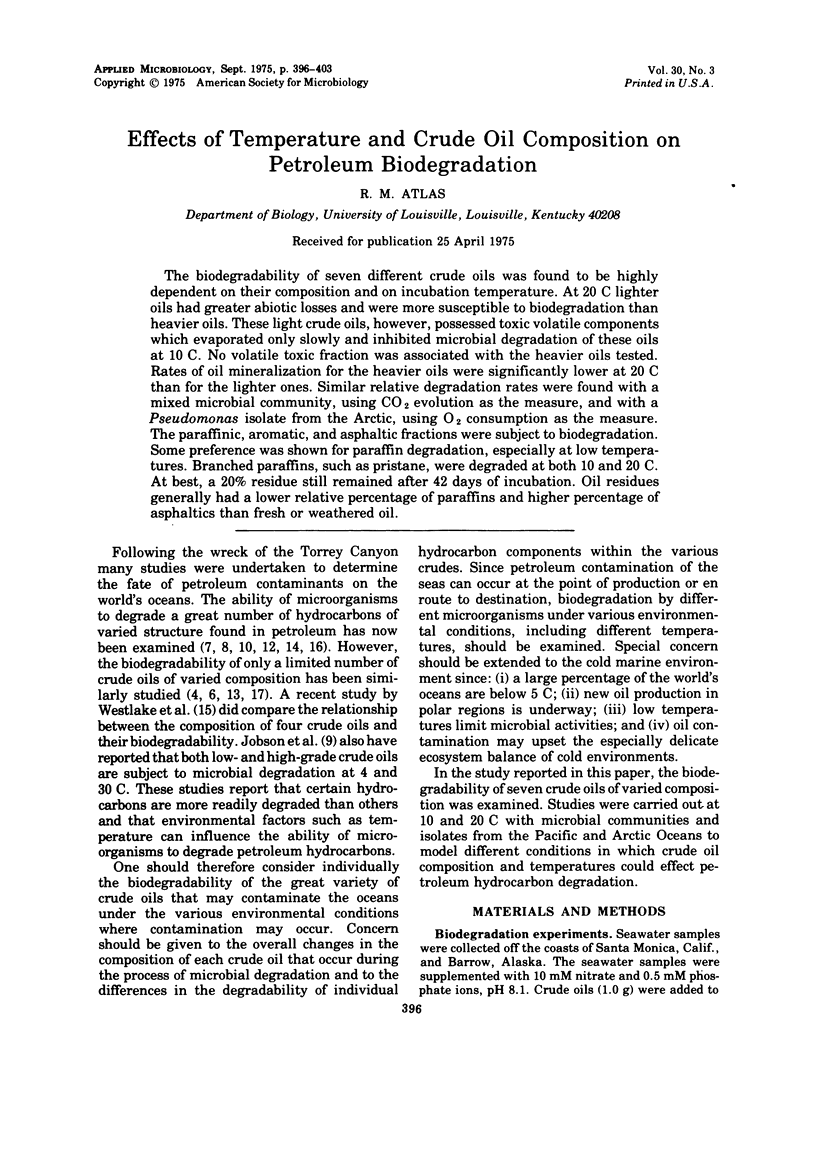
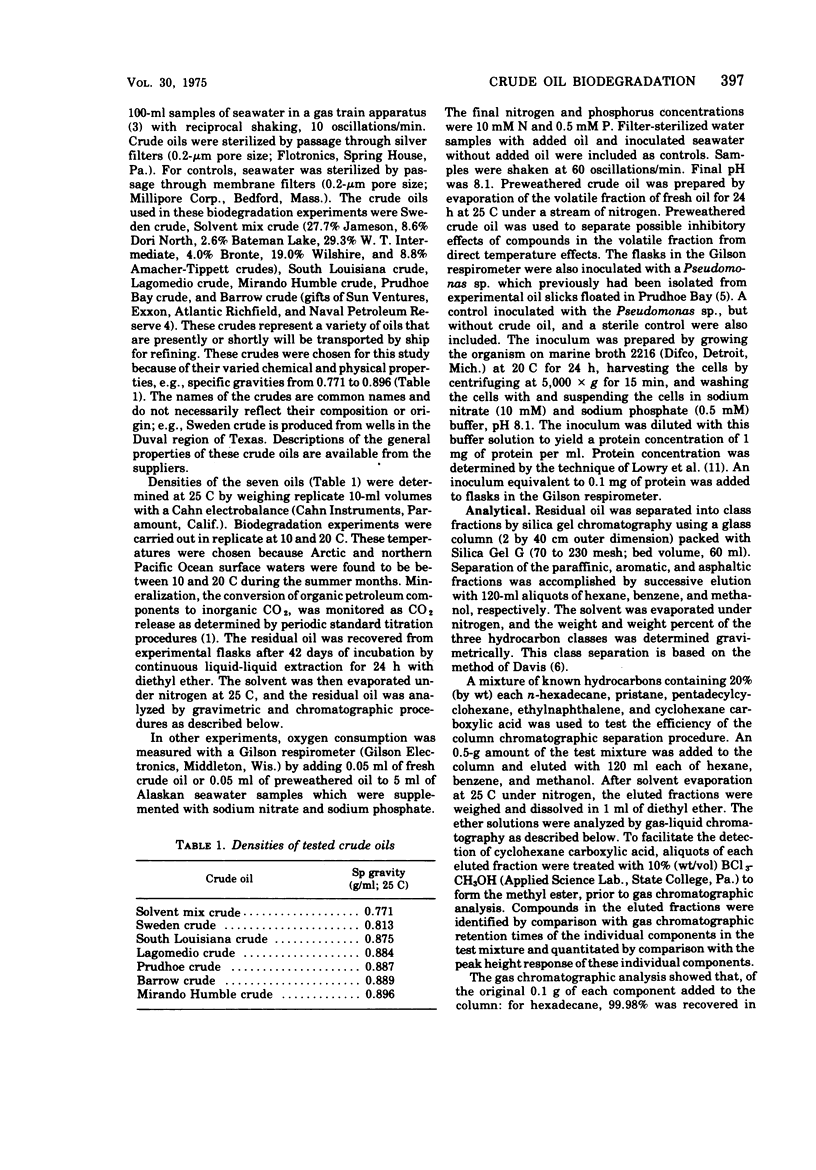
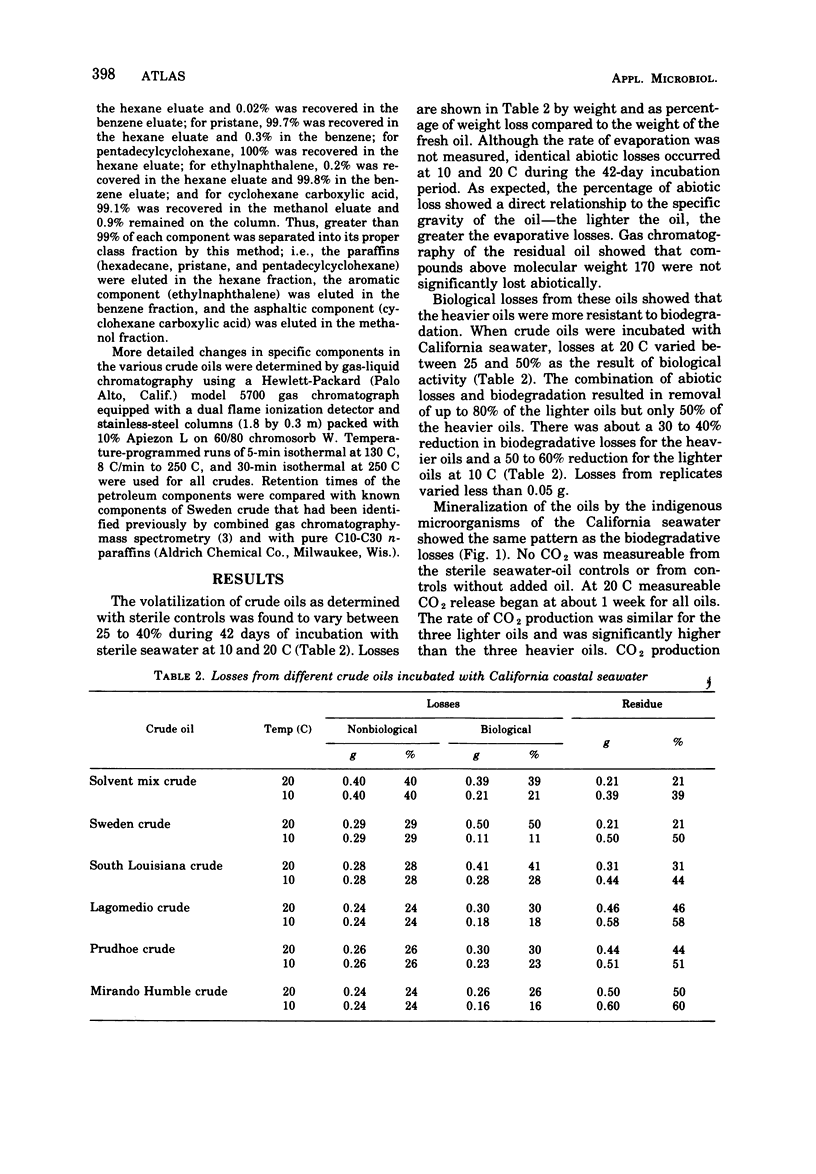
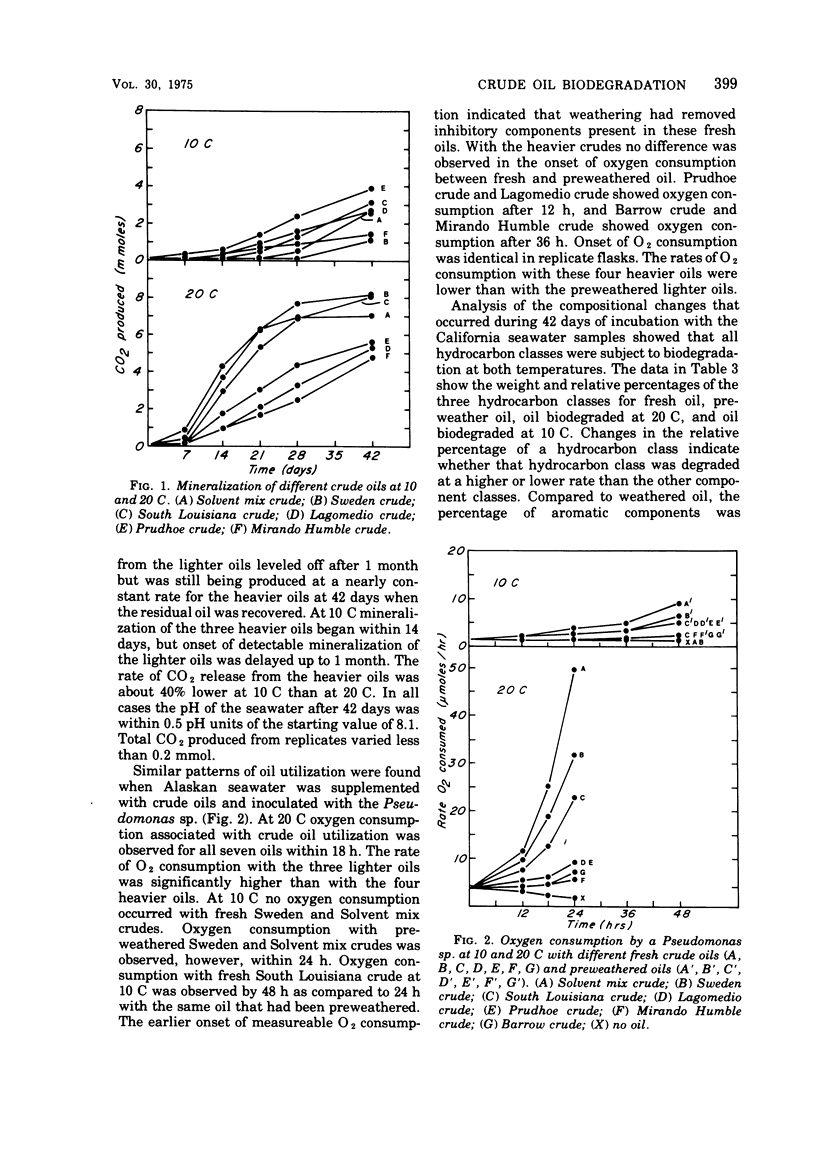
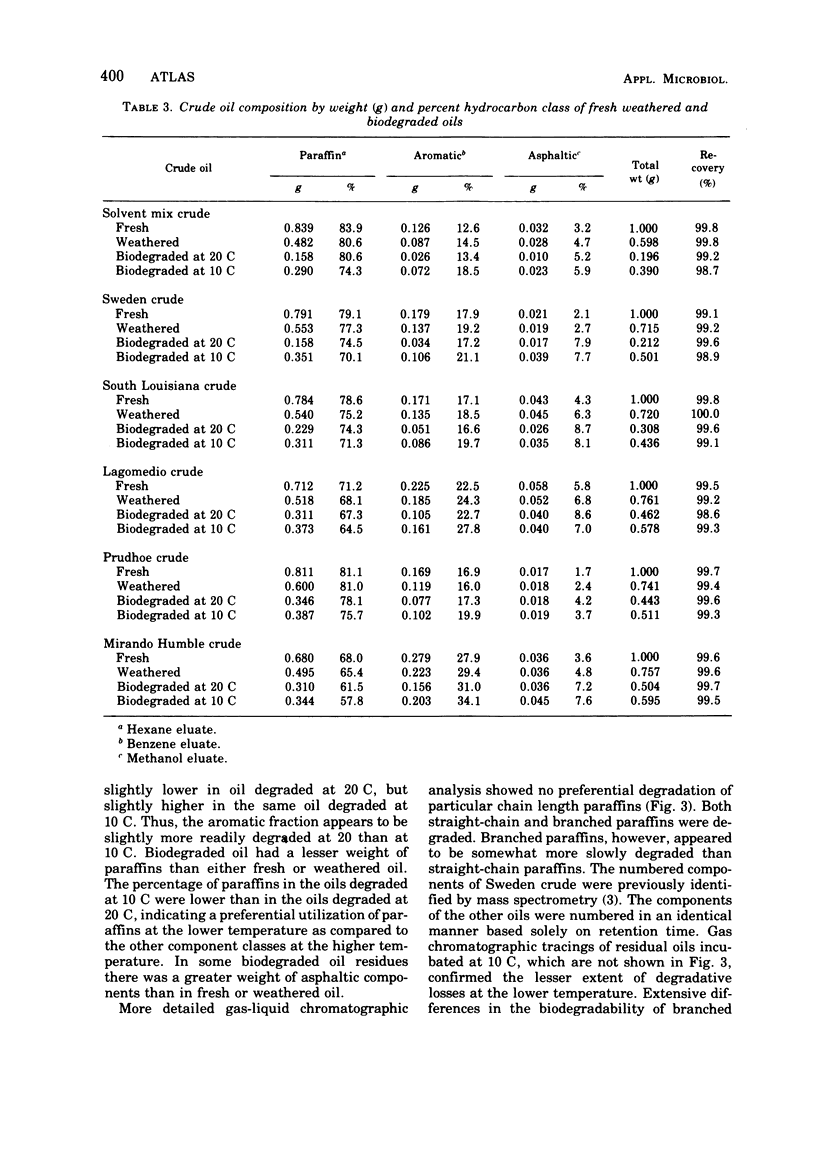
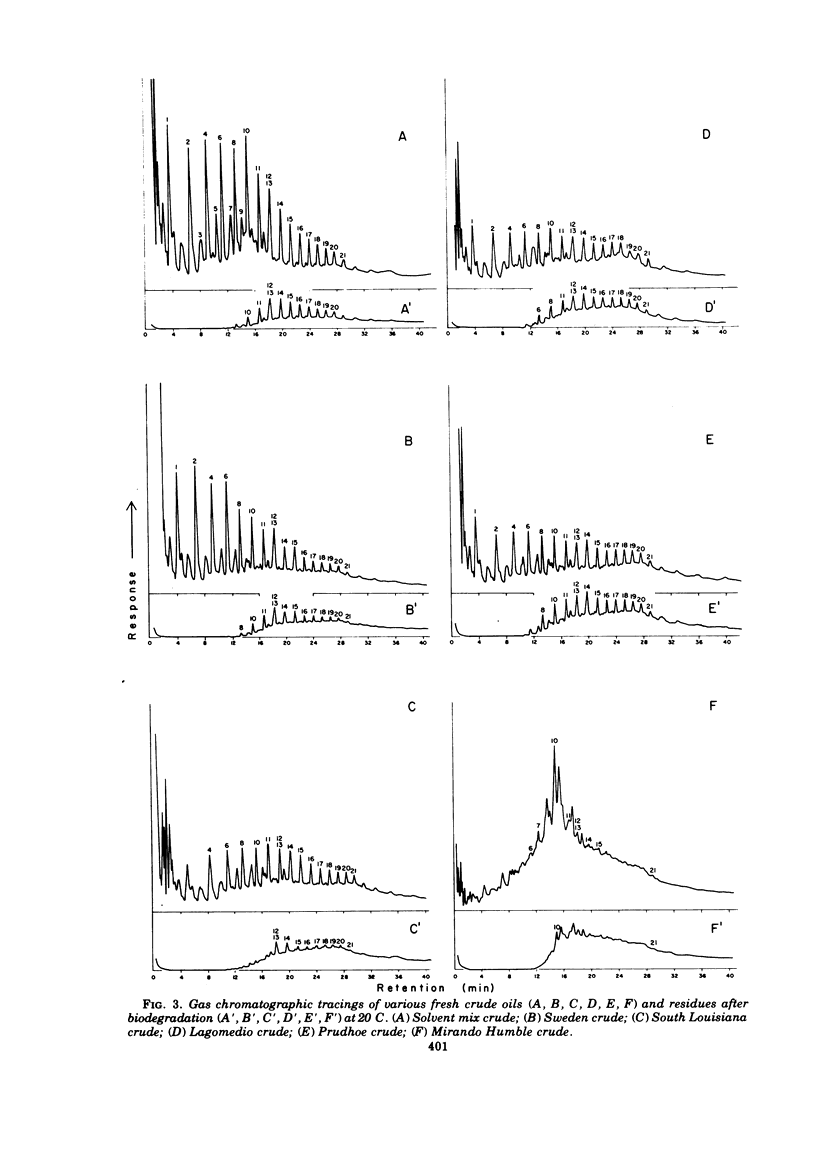
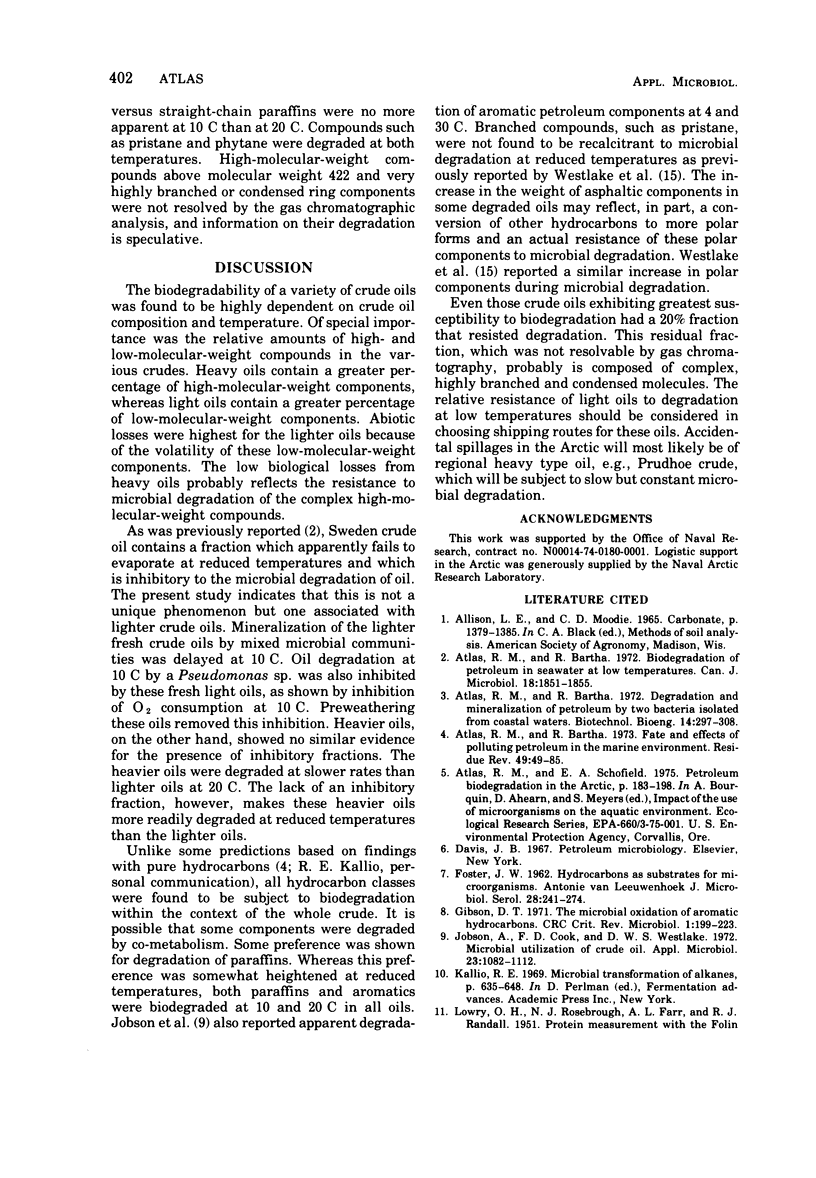
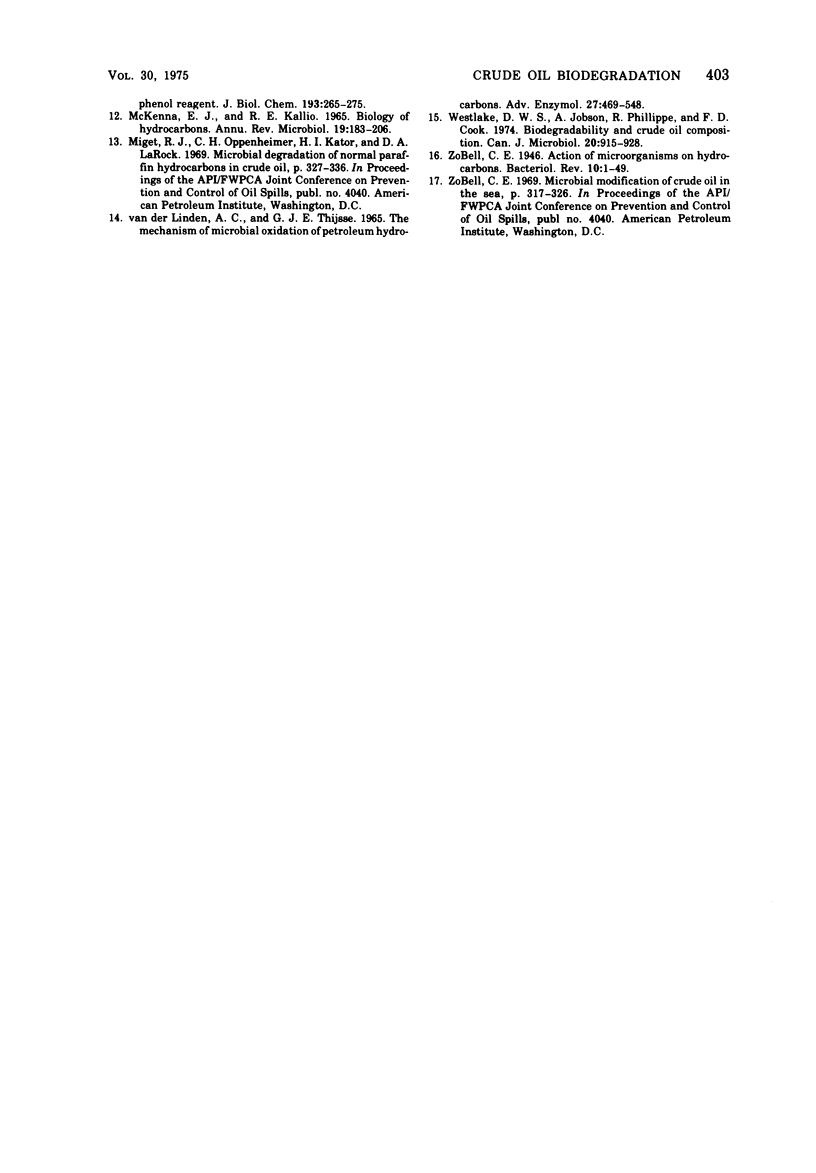
Selected References
These references are in PubMed. This may not be the complete list of references from this article.
- Atlas R. M., Bartha R. Biodegradation of petroleum in seawater at low temperatures. Can J Microbiol. 1972 Dec;18(12):1851–1855. doi: 10.1139/m72-289. [DOI] [PubMed] [Google Scholar]
- Atlas R. M., Bartha R. Degradation and mineralization of petroleum by two bacteria isolated from coastal waters. Biotechnol Bioeng. 1972 May;14(3):297–308. doi: 10.1002/bit.260140303. [DOI] [PubMed] [Google Scholar]
- Atlas R. M., Bartha R. Fate and effects of polluting petroleum in the marine environment. Residue Rev. 1973;49(0):49–85. doi: 10.1007/978-1-4613-9377-1_2. [DOI] [PubMed] [Google Scholar]
- FOSTER J. W. Hydrocarbons as substrates for microorganisms. Antonie Van Leeuwenhoek. 1962;28:241–274. doi: 10.1007/BF02538739. [DOI] [PubMed] [Google Scholar]
- Jobson A., Cook F. D., Westlake D. W. Microbial utilization of crude oil. Appl Microbiol. 1972 Jun;23(6):1082–1089. doi: 10.1128/am.23.6.1082-1089.1972. [DOI] [PMC free article] [PubMed] [Google Scholar]
- LOWRY O. H., ROSEBROUGH N. J., FARR A. L., RANDALL R. J. Protein measurement with the Folin phenol reagent. J Biol Chem. 1951 Nov;193(1):265–275. [PubMed] [Google Scholar]
- McKenna E. J., Kallio R. E. The biology of hydrocarbons. Annu Rev Microbiol. 1965;19:183–208. doi: 10.1146/annurev.mi.19.100165.001151. [DOI] [PubMed] [Google Scholar]
- Westlake D. W., Jobson A., Phillippe R., Cook F. D. Biodegradability and crude oil composition. Can J Microbiol. 1974 Jul;20(7):915–928. doi: 10.1139/m74-141. [DOI] [PubMed] [Google Scholar]
- Zobell C. E. ACTION OF MICROORGANISMS ON HYDROCARBONS. Bacteriol Rev. 1946 Mar;10(1-2):1–49. [PMC free article] [PubMed] [Google Scholar]
- van der Linden A. C., Thijsse G. J. The mechanisms of microbial oxidations of petroleum hydrocarbons. Adv Enzymol Relat Areas Mol Biol. 1965;27:469–546. doi: 10.1002/9780470122723.ch10. [DOI] [PubMed] [Google Scholar]


